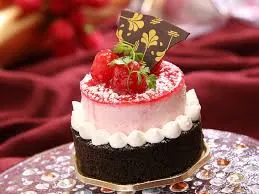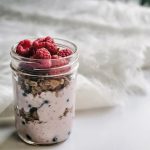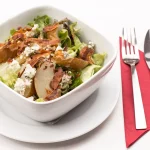The Best Fluffy Pancakes recipe you will fall in love with. Full of tips and tricks to help you make the best pancakes.
Baking a cake is always special, but making a two-tier cake at home takes celebration to a whole new level. Whether you’re preparing for a birthday, wedding, anniversary, or simply want to challenge your baking skills, a tiered cake is the perfect showstopper. While it may look complicated, with the right ingredients, tools, and step-by-step guidance, anyone can learn how to stack, frost, and decorate a beautiful two-tier cake.
In this guide, you’ll discover how to bake sturdy layers, assemble them with confidence, and add stunning decorations that will impress your guests. From essential baking tips to simple decorating ideas, this tutorial will walk you through everything you need to know to create a homemade two-tier cake that looks professional and tastes amazing.
Essential Ingredients and Tools for a Two-Tier Cake
Before you begin baking, having the right ingredients and tools prepared will make the process smoother and more enjoyable. A two-tier cake usually serves between 30–40 slices, so you’ll need enough batter and frosting to cover both layers. Here’s a breakdown:

Key Ingredients You’ll Need
For a classic vanilla sponge cake with buttercream frosting:
- Cake Flour – 4 cups (480 g) (gives a soft and fluffy texture)
- Granulated Sugar – 3 cups (600 g)
- Unsalted Butter – 2 cups (450 g), softened
- Eggs – 8 large (room temperature)
- Baking Powder – 2 tablespoons
- Salt – 1 teaspoon
- Whole Milk – 1 ½ cups (360 ml)
- Vanilla Extract – 2 tablespoons
For the Buttercream Frosting:
- Unsalted Butter – 2 cups (450 g), softened
- Powdered Sugar (Icing Sugar) – 8 cups (1 kg), sifted
- Heavy Cream or Milk – ½ cup (120 ml)
- Vanilla Extract – 2 teaspoons
- Optional: Gel food coloring for decoration
👉 If you prefer chocolate, you can substitute 1 cup (120 g) of cake flour with cocoa powder.
Tools for Stacking and Decorating
- Cake Pans – Two 8-inch (20 cm) pans for the top tier, and two 10-inch (25 cm) pans for the bottom tier
- Cake Boards – One 8-inch and one 10-inch board to support each tier
- Dowels or Straws – At least 6–8 dowels for supporting the top tier
- Cake Leveler or Serrated Knife – For trimming and leveling cakes
- Turntable – Makes frosting and decorating much easier
- Offset Spatula & Bench Scraper – For smooth buttercream finishes
- Piping Bags & Tips – For decorative borders and details
Choosing the Right Cake Flavors for Tiered Cakes
Not all cakes are suitable for stacking. You’ll want cakes that are sturdy but still moist. Here are good options:
- Vanilla Sponge – Light, versatile, pairs well with fruit fillings.
- Chocolate Cake – Rich and sturdy, holds up well with frosting.
- Red Velvet Cake – Soft but dense enough to be stacked.
- Lemon Cake – Fresh and tangy, perfect for spring or summer occasions.
Preparing and Baking the Cake Layers
The foundation of any two-tier cake is its layers. To ensure your cake is sturdy enough for stacking while still moist and flavorful, careful preparation is key. Follow these steps for best results:
How to Bake Even Cake Layers at Home
- Prepare your pans: Grease two 8-inch (20 cm) pans for the top tier and two 10-inch (25 cm) pans for the bottom tier. Line with parchment paper to prevent sticking.
- Divide batter evenly: Use a kitchen scale or measuring cup to pour equal amounts of batter into each pan. This ensures your layers bake evenly.
- Tap the pans: Lightly tap each pan on the counter to release air bubbles, preventing large holes in the cake.
- Bake properly: Bake the 8-inch cakes at 175°C (350°F) for 25–30 minutes and the 10-inch cakes for 35–40 minutes, or until a toothpick inserted comes out clean.
Best Cake Recipes for Tiered Cakes
When baking for a two-tier cake, sturdier recipes work better than very soft or airy ones. Recommended options include:
- Vanilla Sponge Cake – Light but stable; pairs well with fruit or buttercream.
- Chocolate Layer Cake – Rich and dense, perfect for stacking.
- Red Velvet Cake – Moist with a hint of cocoa, great for special occasions.
- Lemon Cake – Tangy and fresh, especially with citrus buttercream.
👉 Avoid overly light cakes (like chiffon or angel food) because they don’t support heavy frosting or stacking.
Cooling, Leveling, and Storing Your Cakes Before Stacking
- Cool completely: Let cakes cool in the pan for 10 minutes, then transfer to a wire rack until fully cooled. Never frost a warm cake—it will melt the buttercream.
- Level the cakes: Use a cake leveler or serrated knife to trim domed tops so each layer is flat. This prevents wobbling when stacking tiers.
- Crumb coat for stability: Apply a thin layer of frosting (crumb coat) and refrigerate for 30 minutes. This seals in crumbs before final decorating.
- Storing: If baking ahead, wrap cooled cakes tightly in plastic wrap and refrigerate for up to 3 days, or freeze for up to 2 months.
Step-by-Step Guide to Stacking a Two-Tier Cake
Stacking a two-tier cake might look intimidating, but with the right method and tools, it’s simpler than you think. Follow these steps to build a strong, balanced cake that looks professional and won’t collapse during your celebration.
Using Cake Boards and Dowels for Support
- Cake boards: Place each tier on its own cake board (8-inch board for the top tier, 10-inch for the bottom). This keeps the cakes stable and makes serving easier.
- Dowels or straws: Insert 4–6 wooden dowels (or thick straws) into the bottom tier to support the weight of the top cake. Cut them so they’re perfectly flush with the cake surface.
- Placement: Arrange the dowels in a circle about 2 inches inside the edge of the top tier’s size (use the 8-inch board as a guide to mark where they should go).
How to Crumb Coat and Frost Each Tier
- Crumb coat: Spread a thin layer of buttercream over each cake tier to lock in crumbs. Chill for at least 30 minutes.
- Final coat: Apply a smooth, thicker layer of frosting (or fondant) over each tier. Use an offset spatula and bench scraper for sharp edges.
- Chilling tip: Refrigerate the frosted tiers for 20–30 minutes before stacking. Cold cakes are easier to handle and less likely to slide.
Placing the Top Tier Securely on the Bottom Tier
- Centering: Carefully lift the top tier (on its cake board) and gently place it on top of the dowel-supported bottom tier.
- Stabilizing: Once centered, press down lightly to secure it. For extra stability, insert a long dowel through the center of both tiers, pushing it all the way to the bottom board.
- Smooth finishing: Apply extra frosting around the base of the top tier to hide any gaps and blend the two cakes seamlessly.
Decorating Ideas for a Two-Tier Cake
Once your cake is stacked and frosted, it’s time to get creative with the design. Whether you want something simple and elegant or bold and colorful, the right decorations will transform your two-tier cake into the centerpiece of any celebration.
Simple Buttercream Designs for Beginners
- Rustic textures: Use an offset spatula to create smooth swirls, rustic waves, or a semi-naked cake style where the layers peek through.
- Piping borders: Add rosettes, shells, or bead borders along the base of each tier using a piping bag and decorative tips.
- Color gradients: Try ombré buttercream by blending two or three shades for a soft fade effect.
Fondant and Elegant Finishes for Special Occasions
- Smooth fondant covering: Roll out fondant and drape it over your frosted tiers for a flawless, polished look.
- Edible pearls and lace: Add edible beads, lace appliqués, or sugar flowers for a wedding or anniversary cake.
- Metallic touches: Use edible gold leaf or silver dust to give your cake a luxurious finish.
Creative Decoration Ideas for Birthdays, Weddings, and Anniversaries
- Birthday cakes: Top with colorful sprinkles, chocolate drips, or themed toppers (unicorns, superheroes, flowers).
- Wedding cakes: Go classic with white buttercream and fresh flowers, or modern with geometric patterns and pastel fondant.
- Anniversary cakes: Incorporate romantic details like hearts, initials, or edible photo toppers.
- Seasonal themes: Fresh berries in summer, autumn leaves for fall, snowflakes for winter, and pastel flowers for spring.
Tips, Storage, and Serving Your Two-Tier Cake
After putting so much effort into baking, stacking, and decorating your cake, the last thing you want is for it to collapse, dry out, or lose its beauty before serving. Here are essential tips to help you keep your cake fresh, stable, and easy to serve.
Common Mistakes to Avoid When Stacking Cakes
- Skipping dowels: Never place the top tier directly on the bottom cake without support—it will sink.
- Warm cakes: Always work with cooled or chilled cakes. Warm cakes are fragile and can slide.
- Uneven layers: Failing to level your cakes leads to wobbling tiers. Trim and check before stacking.
- Too much filling: Overfilling between layers can cause slipping. Keep fillings thin and stable.
How to Store a Two-Tier Cake Properly
- Short-term storage: Keep the cake in a cool room for up to 6 hours if it’s frosted with buttercream.
- Refrigeration: Store in the fridge if not serving the same day. Place in a cake box or cover loosely with plastic wrap to prevent drying.
- Freezing (before stacking): You can bake and wrap the layers in plastic, then foil, and freeze for up to 2 months. Defrost in the fridge before stacking and decorating.
- Transporting: Use a sturdy cake board and box. Keep the cake chilled before transport and handle gently to avoid shifting.
Cutting and Serving a Two-Tier Cake Without Collapsing It
- Remove the top tier first: Lift it off by sliding a spatula under the cake board. This makes serving much easier.
- Cut smart portions: For the bottom tier, cut vertical slices about 1×2 inches for consistent servings.
- Use the right knife: A long serrated knife works best for clean cuts. Wipe the blade after each slice for neat presentation.
- Serving size guide: A 10-inch tier usually serves 25–30 slices, and an 8-inch tier serves 15–20 slices—perfect for 40+ guests.






I’ve been browsing on-line greater than 3 hours these days, yet I by no means discovered any attention-grabbing article like yours. It¦s pretty value enough for me. Personally, if all website owners and bloggers made good content material as you probably did, the web might be much more helpful than ever before.